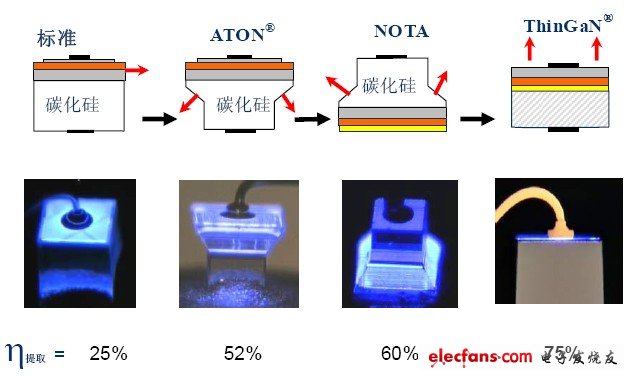LED lighting market opportunities bring infinite imagination to the industry, LED lighting applications have jumped from outdoor LEDs to indoor lighting applications. According to the statistics of Strategies Unlimited, the development of LED indoor lighting will have an exponential growth trend in the next five years. According to estimates, by 2011, its output value will be tens of billions of dollars. In particular, in 2009, the European Union took the lead in implementing the plan to ban incandescent lamps, and the issue of energy conservation received much attention, which created a huge market opportunity and optimistic prospects for LED indoor lighting. The following is an analysis of the development of high-power LEDs in the field of indoor lighting from the requirements of lighting technology such as heat dissipation technology, optical design and drive design. Development of high power LED lighting The development of high-power LED lighting depends on two elements: the chip itself; the second is the lighting technology, including heat dissipation, optics, and drive. The external environment also needs to look at national and international standards for LED products. First, the development of the chip At present, the key to the development of LED chip technology lies in the substrate material and epitaxial growth technology. The base material is developed from traditional sapphire materials, silicon and silicon carbide to new materials such as zinc oxide and gallium nitride. Whether it's high-power chips for accent lighting and monolithic lighting, or low-power chips for decorative lighting and some simple auxiliary lighting, the key to technology upgrades is how to develop more efficient and stable chips. In just a few years, LEDs have achieved great breakthroughs in light efficiency with a series of technological improvements including chip structure, surface roughening and multi-quantum well structure design. Figure 1 is a schematic diagram showing the development of an LED chip structure. As production technology matures, LED quantum efficiency will further increase, and the efficacy of LED chips will also increase. Figure 1: Development history of LED chip structure Thin-film technology is the core technology in the production of ultra-bright LED chips, which reduces the light output loss on each side and allows more than 97% of the light to be output from the front side by means of the reflective surface at the bottom (see Figure 2). This not only significantly improves the light efficiency of the LED, but also creates superior convenience for the lens design. Figure 2: Front light output - comparison of common LED and thin film technology LED The Wireless Bluetooth Earphone is designed according to ergonomics. It can fit the contour of your ears comfortably, creating a genuine feeling of freedom and flexibility. Light enough in the ear canal, Various sizes of ear buds for different sizes of ears are perfect for gym, jogging, hiking, cycling, and so on.We are the Top Chinese manufacturer of Wireless Bluetooth Earphone, and look forward to cooperate with you! Wireless Bluetooth Earphone,Headset Bluetooth,Wireless Headset,Wireless Earphones ShenDaDian(China) Digital Electronics Co.,Ltd , http://www.btearbuds.com
